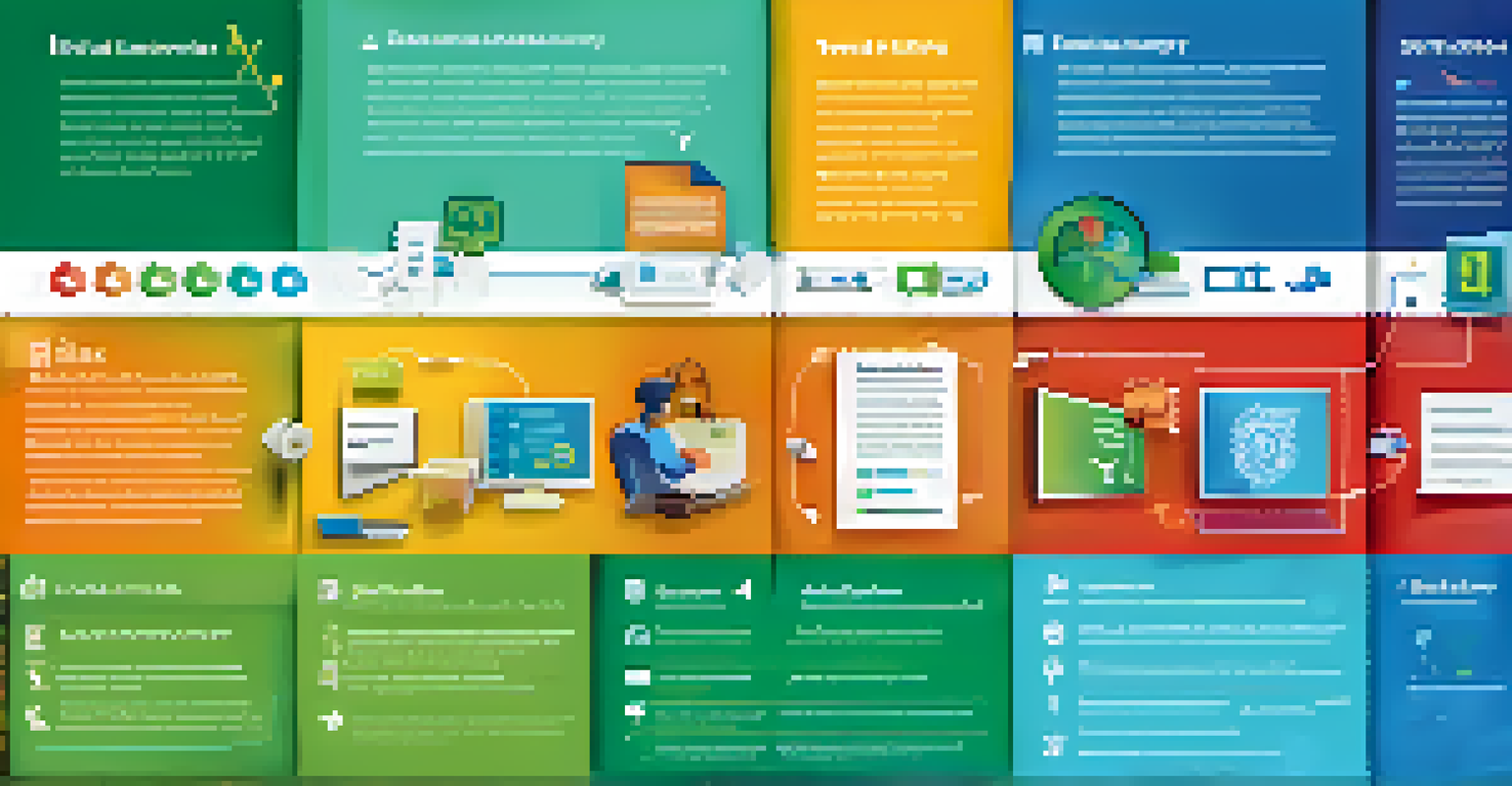Assessing Digital Literacy: A Guide for Educators

Understanding Digital Literacy: What It Means Today
Digital literacy goes beyond just knowing how to use technology; it includes the ability to find, evaluate, and communicate information effectively through digital platforms. In today’s world, where information is abundant, understanding digital literacy is crucial for both educators and students. It's about empowerment—giving learners the skills to navigate the digital landscape safely and responsibly.
Digital literacy is not just about knowing how to use technology; it's about understanding how to use it responsibly and effectively.
For example, consider a student who can navigate the internet but struggles to discern credible sources from unreliable ones. This gap highlights the importance of teaching digital literacy comprehensively. Educators play a pivotal role in guiding students to develop critical thinking skills that are essential for evaluating information online.
Ultimately, digital literacy fosters informed citizenship and prepares students for a workforce that increasingly relies on digital tools. By equipping learners with these skills, educators contribute to their overall academic success and personal growth.
The Importance of Assessing Digital Literacy Skills
Assessing digital literacy is essential for understanding where students stand in their ability to use technology effectively. It allows educators to tailor their teaching strategies to meet the diverse needs of learners. Just like a doctor conducts a check-up to assess a patient’s health, educators need to evaluate their students' digital competencies to ensure they are fit for the digital age.

Moreover, assessments can reveal gaps in knowledge and skills, enabling educators to address these areas. For instance, if a group of students is proficient in using social media but lacks skills in online research, targeted instruction can help bridge that gap. This tailored approach not only enhances learning outcomes but also boosts student confidence.
Digital Literacy Empowers Learners
Understanding digital literacy equips students with essential skills to navigate, evaluate, and communicate information effectively in a digital world.
By regularly assessing digital literacy, educators can track progress and make informed decisions about curriculum design. This ongoing evaluation is key to ensuring that students are not just consumers of information but also critical thinkers and creators.
Methods for Assessing Digital Literacy in the Classroom
There are various methods educators can use to assess digital literacy, including quizzes, project-based assessments, and peer evaluations. Quizzes can test students' knowledge of digital tools and their functionalities, while project-based assessments allow learners to demonstrate their skills in real-world contexts. For example, a project that requires students to create a digital presentation not only assesses their technical skills but also their ability to communicate effectively.
In a world where information is abundant, the ability to discern credible sources from unreliable ones is invaluable.
Another effective method is through peer evaluations, where students assess each other's work. This encourages collaboration and helps students learn from one another. By engaging in discussions about their work, they can gain insights into different perspectives, making the learning process richer.
Finally, educators can incorporate self-assessments, allowing students to reflect on their own skills and identify areas for improvement. This promotes a sense of ownership over their learning and encourages lifelong learning habits.
Creating a Digital Literacy Assessment Framework
A robust assessment framework is essential for effectively evaluating digital literacy. This framework should align with learning objectives and incorporate a variety of assessment methods. Educators can start by clearly defining what digital literacy means in their context and what specific skills they want to assess.
For instance, the framework could include categories such as information evaluation, digital communication, and online safety. Each category can have specific indicators that students need to meet. This structured approach not only clarifies expectations for students but also provides a comprehensive view of their capabilities.
Assessments Guide Digital Skills Growth
Regular assessments of digital literacy help educators tailor their teaching strategies, addressing gaps in knowledge and enhancing student confidence.
Additionally, involving students in the creation of this framework can foster a sense of responsibility and engagement. When learners understand what is expected of them and have a say in the assessment process, they are more likely to take their digital literacy development seriously.
Integrating Digital Literacy Across the Curriculum
Digital literacy shouldn’t be confined to a single subject; it should be integrated across the entire curriculum. This approach ensures that students practice their digital skills in various contexts, enhancing their learning experience. For example, a science project that requires online research and data presentation incorporates digital literacy into a traditional subject.
Educators can collaborate to design multidisciplinary projects that emphasize digital competencies. By working together, teachers can create a cohesive learning experience that reinforces the importance of digital literacy in all fields. This not only makes learning more relevant but also prepares students for the interconnected world they will navigate post-graduation.
Moreover, integrating digital literacy fosters creativity and innovation. As students engage with different subjects, they can apply their digital skills in unique ways, sparking interest and excitement in their learning journey.
Challenges in Assessing Digital Literacy Effectively
While assessing digital literacy is vital, it comes with its share of challenges. One major hurdle is the rapid pace of technological change; what is relevant today may become obsolete tomorrow. This makes it difficult for educators to create assessments that remain applicable over time.
Additionally, there may be disparities in access to technology, creating inequities among students. Some learners may have extensive exposure to digital tools at home, while others might not. This gap can skew assessment results and highlight the need for equitable access to technology in educational settings.
Integrate Digital Literacy Everywhere
Incorporating digital literacy across the curriculum ensures students apply their skills in diverse contexts, reinforcing their relevance in all subjects.
To tackle these challenges, educators must stay updated on technological trends and be adaptable in their assessment methods. Continuous professional development and collaboration among educators can help bridge gaps and ensure that all students have the opportunity to develop essential digital skills.
Future Directions for Digital Literacy Assessment
Looking ahead, the future of digital literacy assessment is likely to evolve with advancements in technology. For instance, incorporating artificial intelligence (AI) into assessments could provide personalized feedback and adaptive learning experiences. This approach can cater to individual student needs, making assessments more effective and engaging.
Additionally, as remote learning continues to be a significant aspect of education, assessments may increasingly shift to online formats. Educators will need to develop strategies to ensure academic integrity while still accurately measuring students' digital literacy skills. This could involve creating assessments that require authentic tasks that reflect real-world applications.

Ultimately, the goal is to create a dynamic assessment landscape that grows alongside technological advancements. By remaining flexible and innovative, educators can ensure that their assessment methods not only measure digital literacy but also inspire a love for learning in the digital age.